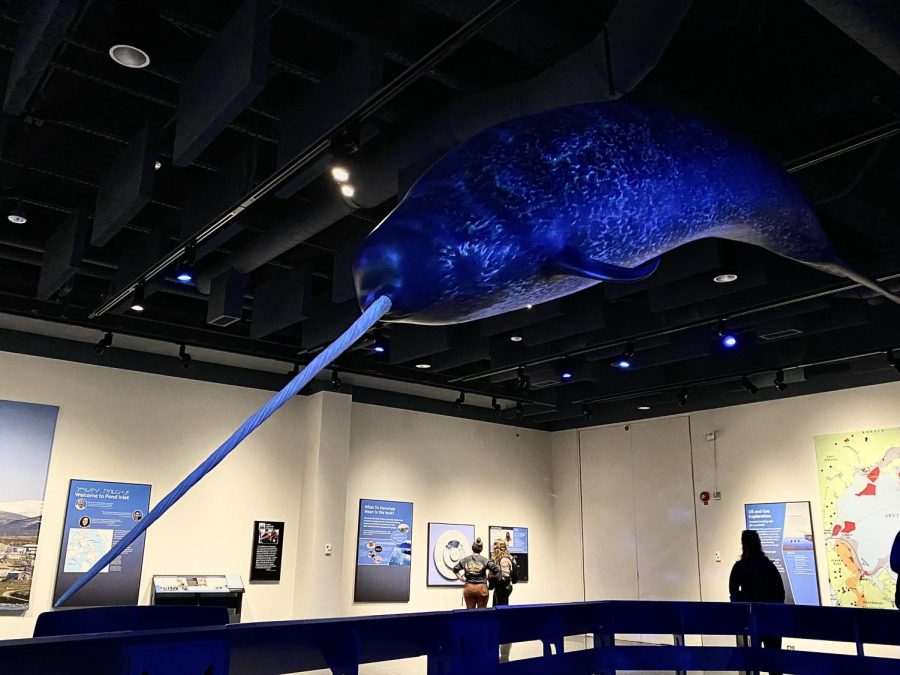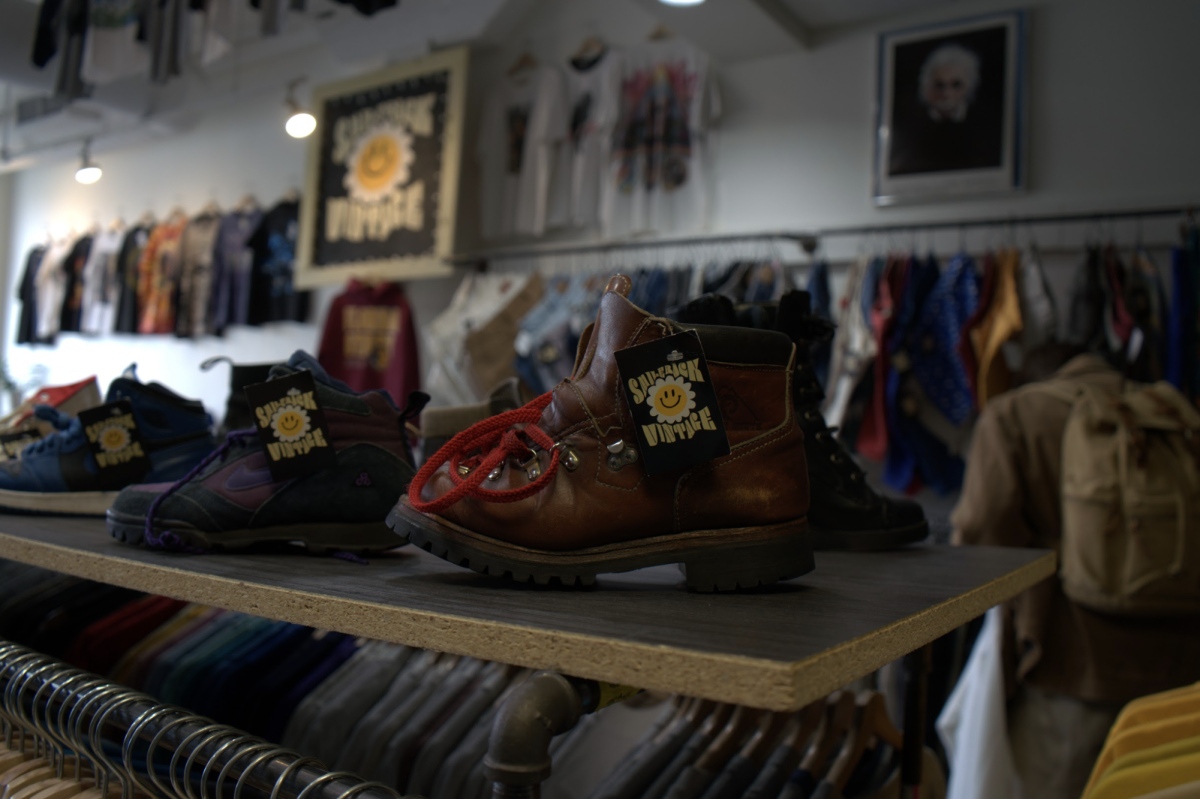The Bell Museum premiered a new exhibit, “Narwhal: Revealing an Arctic Legend,” in October in addition to celebrating its 150-year anniversary.
The Bell Museum was founded by the Minnesota Legislature and put in trust to the University of Minnesota in 1872 as the Minnesota State Natural History Museum and has been housed in its current location on Larpenteur Avenue near the St. Paul Campus since 2018.
The newly debuted narwhal exhibit is a traveling exhibition from the Smithsonian Institution and will be hosted at the Bell Museum until Jan. 8, 2023, said Kelsey Griffin, gallery programs coordinator at the museum. The Bell Museum chose to display this exhibit as winter begins to illustrate the impacts of climate change and the importance of Indigenous knowledge in science.
The exhibit features a life sized model of an 18-foot narwhal and also contains a nearly 9-foot cast of a real narwhal tusk that people can stand next to. There are also plenty of interactive displays on the walls, Griffin said.
“This exhibit is all about narwhals, their changing ecosystem and how that changing system is really important to helping us understand the global changing climate,” said Nehwoen Luogon-Bojkov, communication associate at the Bell Museum.
According to the Bell Museum’s website, first-hand accounts with Inuit community members can reveal how experience and traditional knowledge can aid in the overall understanding of narwhals and global climate change.
“Inuit communities and the Smithsonian researchers have worked together to pair that Indigenous knowledge and other scientific research to provide us with more information about Narwhals,” Luogon-Bojkov said.
The exhibit is open to the public for regular general admission. University students get admission to all Bell Museum exhibits for free.
In the coming months and for the current Native American Heritage Month of November, the Bell Museum has more events to offer and learn from.
On Nov. 30, there is a free film screening of “Inhabitants: Indigenous Perspectives on Restoring Our World” at the museum in addition to a discussion after the screening.
“The film focuses on five Native American communities and their journeys to restoring their traditional land management practices in the face of a changing climate,” Luogon-Bojkov said.
On Dec. 14, there is also a virtual discussion about the importance of different animals and language to the Dakota and Lakota communities, Luogon-Bojkov said.
“We are on Native American soil, and that’s not just Minnesota, it’s not just the Bell Museum, that’s the whole country,” Luogon-Bojkov said. “I think it’s just been really important to continue to make that an important part of learning about nature and the natural world around us.”
The narwhal exhibit is a traveling exhibition from their affiliation with the Smithsonian Museum, said Luogon-Bojkov, the Bell Museum also has a long-standing partnership with the University of Minnesota and the College of Food, Agricultural and Natural Resource Sciences (CFANS).
Both graduate and undergraduate CFANS students, in addition to faculty, use the Bell Museum’s collections for research and the Bell Museum regularly employs University students, Luogon-Bojkov said.
Joleen Hadrich, interim associate dean of CFANS research and outreach centers, said in an email to the Minnesota Daily that the Bell Museum has created a place for visitors to engage with groundbreaking research through collections, rotating exhibits and hands-on experiences.
“As they celebrate their 150th anniversary this year, we’re proud to recognize their ongoing contributions to CFANS, the University, and our state,” Hadrich said. “With a legacy of bringing discoveries to life through science, CFANS is fortunate to have a long-standing partnership with the Bell Museum, whose role as Minnesota’s state natural history museum remains as relevant today as ever.”
Now that the Bell Museum has made its 150 year milestone, it is focusing on the next 150 years, Sushma Reddy, associate professor and curator of birds at the Bell Museum, said.
Reddy said one of the reasons she came to work for the University was because of the Bell Museum’s strong reputation.
Reddy said the educational opportunities the Bell Museum provides is a valuable resource for biodiversity conservation and public understanding.
“I’m a real big believer in the wonder that natural history museums can bring to people of all sorts,” Reddy said. “It’s what inspired me to go down my career path.”




















